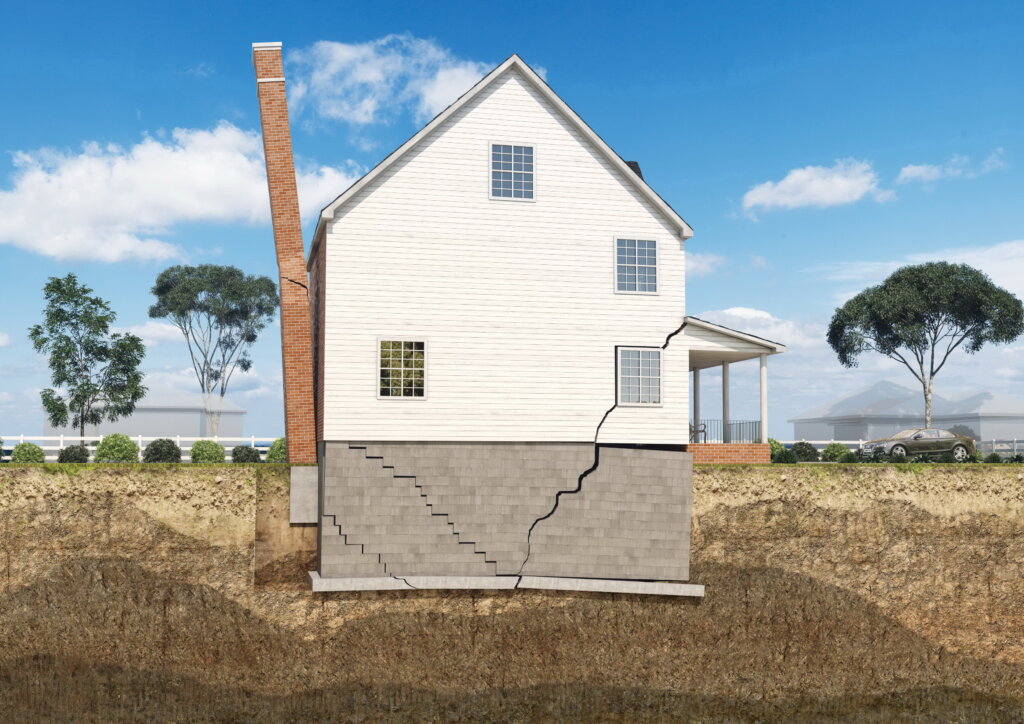A lot of people overlook the possibility of their mobile home being unleveled. This is a very common problem that can happen to any mobile home. This can happen due to poor installation or the shifting of the soil. It can cause a lot of damage to your mobile home if not dealt with. Unlevel homes can sink or even collapse.
A clear sign that your mobile home is uneven is that doors swing open or stick out, or windows don’t shut properly. Some other signs are buckled skirtings and cracks in the walls and ceilings. If your mobile home is unleveled, you need to take the necessary steps to level it out. Or else you will have to deal with a sunken mobile home.
In this post, I’ll tell you how you can figure out if your mobile home is unleveled or not.
Let’s dive in.

Signs That Indicate That Your Mobile Home Is Unleveled
When your mobile home is unlevel, it’ll show clear signs for you to pick up on. Unleveled mobile homes can cause a lot of damage, like sinking the house, damaging the plumbing, and even short-circuiting electrical outlets. Here are a few signs that indicate that your mobile home is unleveled.
Doors And Windows Become Tricky To Open And Close
The easiest way to tell whether your mobile home is unleveled or not is by checking the doors and windows. On an unleveled mobile home doors and windows don’t properly shut off. They tend to stick out or swing right open. It’s a very easy sign to notice. But before jumping to a conclusion you may want to try tightening the hinges of the doors and windows first. And if the problem still happens, then your mobile home is indeed unleveled.
When a mobile home isn’t properly installed or if the soil shifts after installing it, it causes it t be unleveled. As a result, the house gets tilted to one side. And because of that, doors and windows don’t shut properly as the house is tilted, and gravity pulls them to the tilted side. If something like this happens, call an expert to fix it.
Cracks Show Up On Walls And Ceilings
Another sign that your mobile home is unleveled is that it starts to show cracks on the walls and ceilings. It starts with a small hairline crack that you won’t even be able to notice. But after some time, that crack grows and increases in length, which clearly indicates that your mobile home is unleveled. After the house is unleveled, take steps to relevel your mobile home.
Releveling your mobile home is the key to preserving the structural integrity of your mobile home. Some try to go the DIY route for releveling a mobile home. But it can be complex and tedious. So, it’s recommended that you consult a professional for this.

Why Do You Need To Level Your Mobile Home?
It is necessary to level your mobile home to ensure its longevity. Things can slide around in an unleveled mobile home. Furthermore, an unleveled home places extreme strain on its structure. If this problem is not addressed, it can lead to more serious and costly problems. This can cause the mobile home’s floor to sink or, worse, cause the house to collapse. Not to mention the fact that it will require frequent repairs.
Just like traditional homes, mobile homes settle at different rates on the ground. As a result, you may end up with a slouched home that causes several problems, including structural and plumbing issues.
Before purchasing a mobile home, inspect for a sinking foundation, sagging floorboards, or jammed windows or doors.
While there are a few online resources that can assist you in releveling your home. I strongly advise you to seek professional assistance.
Cost Of Releveling A Mobile Home
Several factors determine the cost of releveling a mobile home. Here are a few factors that influence the cost of releveling.
Location
The cost of releveling is heavily influenced by the location. It can cost between $450 and $600.
House Dimensions
While a single-wide house can be leveled for $450, larger homes can cost up to $1,000, depending on size.
To Wrap It Up
Having an unleveled mobile home can compromise the safety of its residents. So, it’s important to see the signs and fix the issue. This post will help you determine if the home is unleveled or not.




